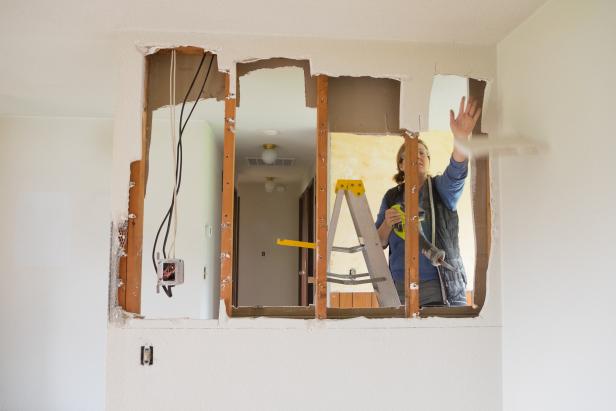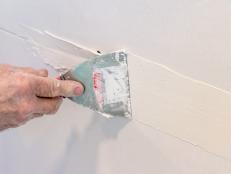How Much of a Load-Bearing Wall Can Be Removed?
Plan carefully and feel at ease making major changes to the footprint of your home.

Joshua Rainey, Shutterstock

Home renovation is no light matter, especially when it involves heavy lifting to remove or replace walls. As homeowners continue to embrace open concepts and look for ways to expand and better utilize spaces in their home, removing walls is often at the forefront of an ambitious project. There are a lot of things to consider upfront when you’re planning to remove any wall – but especially a load-bearing wall. Planning is key, as it’ll help you determine how much of a load-bearing wall can easily be removed. After all, in most homes you can remove as much as you wish of a load-bearing wall, but it has a lot to do with what’s inside the wall, and how you plan to redistribute the weight.
Load-bearing walls are critical to the structure of your home. Unsupported, the weight of the home can result in buckling and an unfortunate roof collapse. When in doubt, it’s always a good idea to consult with an engineer who can gauge the weight load affected, and advise on what you will need to do in order to keep your home upright.

When you have your eye set on removing a load-bearing wall, you may be thinking of removing the whole wall to turn two rooms into one, or maybe just removing a piece of the wall to widen a doorway or create a pass-through between rooms. Removing any part of a wall requires thoughtful consideration for how the piece of wall that was removed will be replaced with a new structure. It also forces you to consider what’s behind the walls that will be affected by the change.
Always start by considering the ramifications of removing any wall, but especially a load-bearing wall. Here are some questions to make sure you’re thinking from all directions:
- Does the piece of wall you want to remove accommodate light switches and electrical outlets? If so, where does the electrical run? Where will it need to be moved?
- To meet codes, will you need to add new outlets anywhere else between the surrounding rooms?
- Will baseboard heating be affected? Be aware of gas lines or water lines that will need to move. Sometimes it’s difficult to identify what utilities flow through a wall.
- How will any new floor transitions be accommodated?
- What is the span of the wall that will be opened? In addition to new ceiling supports, will you need vertical beams?

Joshua Rainey, Shutterstock
How Can You Tell if a Wall Is Load Bearing?
The easiest way to identify a load-bearing wall is to check how the floor joists and ceiling joists are positioned.
If you’re able to look at the floor joists from below (such as in the basement or a crawl space) you might see a heavier beam beneath the wall. This indicates that it’s load bearing.
If you have access to the ceiling joists (and you may not until you open up the drywall) you will notice spliced joists which meet together, resting atop the wall. This indicates that the wall is bearing the weight of those joists, supporting upper stories of the home, or the roof. Without support for those spliced boards, they’ll collapse downwards.
All outer walls of a home are load bearing, as they support the edges of the roof.














































